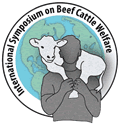Rumen Acidosis
An animal welfare issue, rumen acidosis is not limited to cattle eating grain.
Rumen acidosis is a malady that many cattle-savvy people associate with grain overload. Acidosis is the likely outcome when a large quantity of grain is introduced to an unadapted ruminate digestive system. However, it can occur in animals grazing forages only, provided the forages contain highly soluble carbohydrates.

“We used to think managing acidosis was all about adapting the digestive system by stepping up cattle rations at the start of the finishing period. But adaptation may have to happen more than once — even near the end of the finishing period. It happens after any disruption to normal feeding patterns and consumption levels,” said Kelly Lechtenberg, owner of Midwest Veterinary Services and Central States Research Centre, at Oakland, Neb.
According to veterinarian and researcher Kelly Lechtenberg, acidosis can result from excessive ingestion of any feeds rich in fermentable components. While even grazing cattle can be affected, the owner of Midwest Veterinary Services and Central States Research Centre, at Oakland, Neb., said acidosis is more often a feedlot issue. Lechtenberg talked about this digestive disorder and its implications for animal welfare during the fifth International Symposium on Beef Cattle Welfare, hosted June 8-10, 2016, in Manhattan, Kan.
Lechtenberg said acidosis occurs when rumen pH declines from the normal range of 6.5-7 to below 5.8. Acute acidosis typically results from an abrupt increase in an animal’s intake of feedstuffs that can be rapidly fermented by rumen microbes. This increases lactic-acid production and accumulation in the rumen. The low pH environment favors an increase in acid-producing microbes and the further production of lactic acid exceeds the rate at which it can be removed from the digestive tract.
This leads to increased endotoxin production; decreased blood and urine pH; and multiple secondary effects, including lethargy, anorexia and laminitis.
“And there’s the diarrhea. Bubbly diarrhea is a symptom of classic acidosis,” added Lechtenberg, explaining that the excrement bubbles because it contains still-fermenting rumen substrate.
In addition to lameness of gait, indications that animals are in pain may include the inability to find a comfortable standing position and grinding of teeth. Lechtenberg says animals often become lame within 24 hours of acidosis onset, but usually respond to analgesic therapy.
 “We used to think managing acidosis was all about adapting the digestive system by stepping up cattle rations at the start of the finishing period,” said Lechtenberg, explaining how cattle are shifted from rations containing mostly roughage to those containing more concentrates. “But adaptation may have to happen more than once — even near the end of the finishing period. It happens after any disruption to normal feeding patterns and consumption levels.”
“We used to think managing acidosis was all about adapting the digestive system by stepping up cattle rations at the start of the finishing period,” said Lechtenberg, explaining how cattle are shifted from rations containing mostly roughage to those containing more concentrates. “But adaptation may have to happen more than once — even near the end of the finishing period. It happens after any disruption to normal feeding patterns and consumption levels.”
Lechtenberg said management to lessen the risk of acidosis includes providing ample bunk space, pen maintenance and providing easy access to ample supplies of drinking water. A consistent feeding schedule, heat stress mitigation and low-stress cattle handling also help control external stimuli that affect cattle feed intake. The goal, said Lechtenberg, should be to manage the environment in ways that foster frequent small meals and prevent opportunities for hungry cattle to “load up” on feed.
Watch for additional coverage of the 2016 ISBCW on www.angus.media and in the Angus Journal and Angus Beef Bulletin. Comprehensive meeting coverage will be archived at www.api-virtuallibrary.com/meetings_other_news.html.







